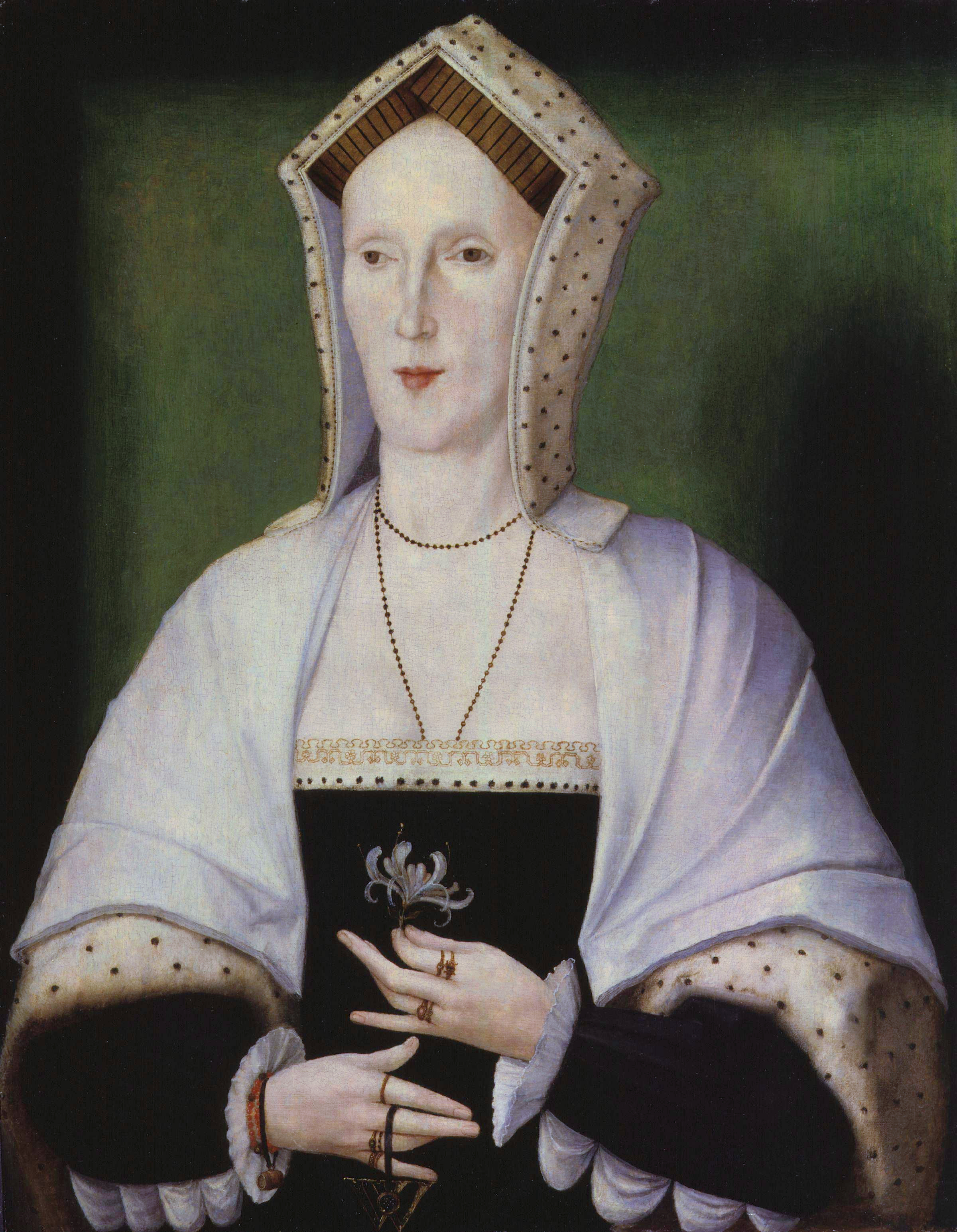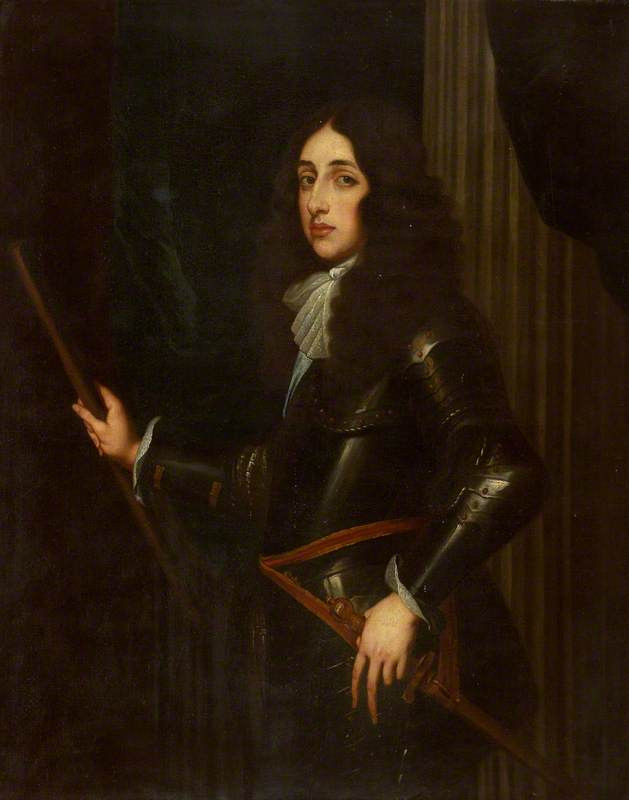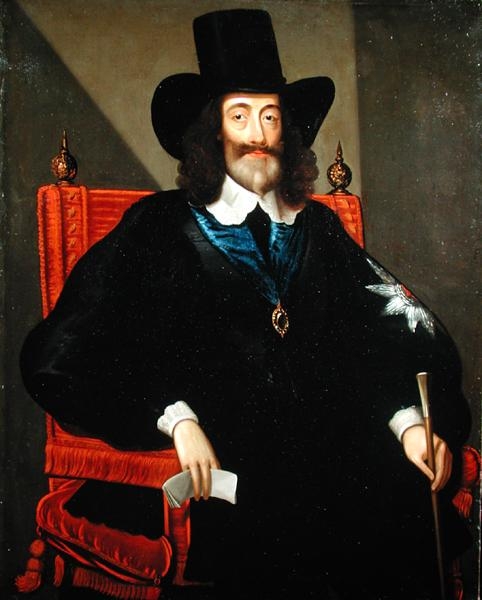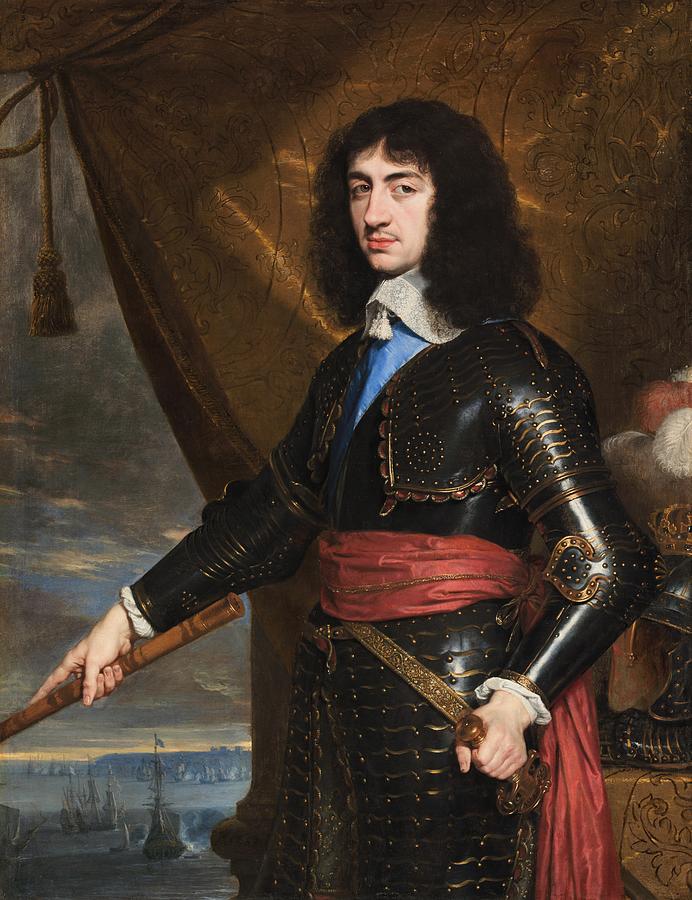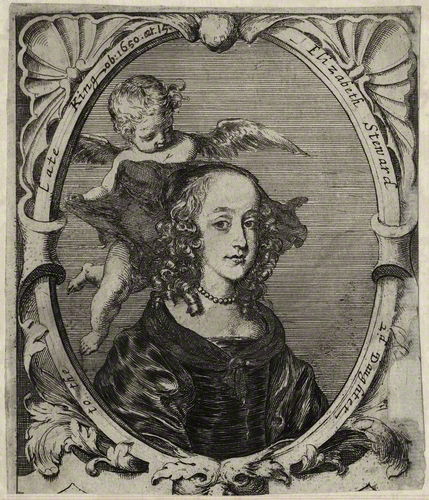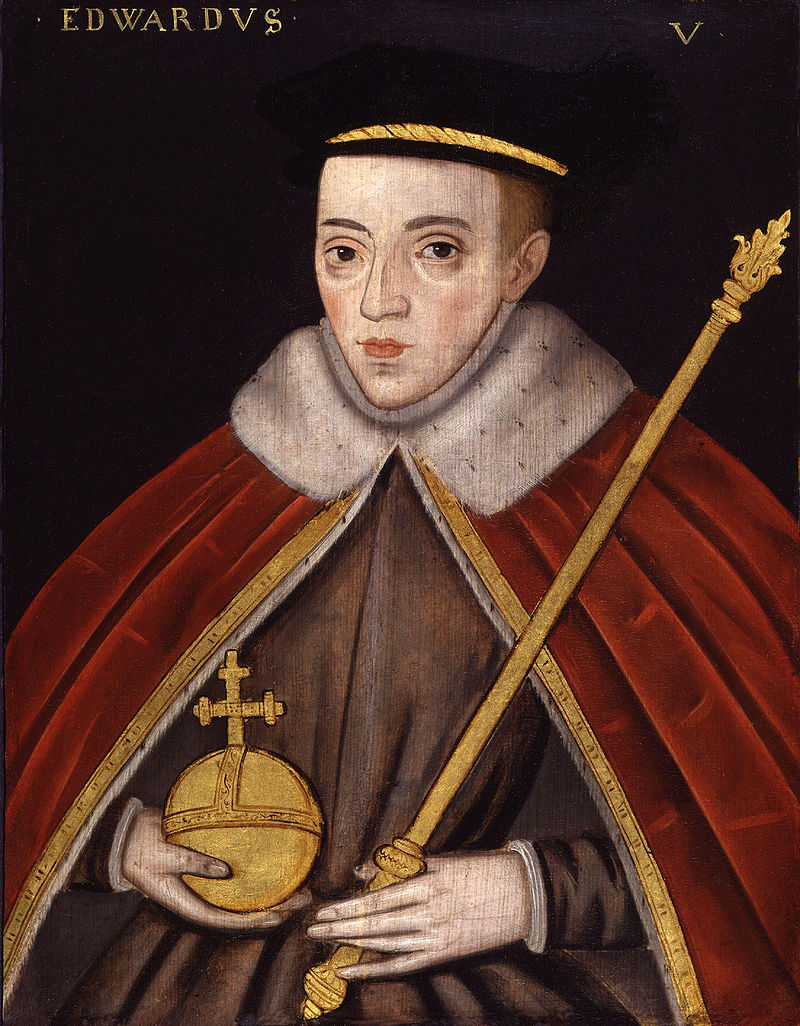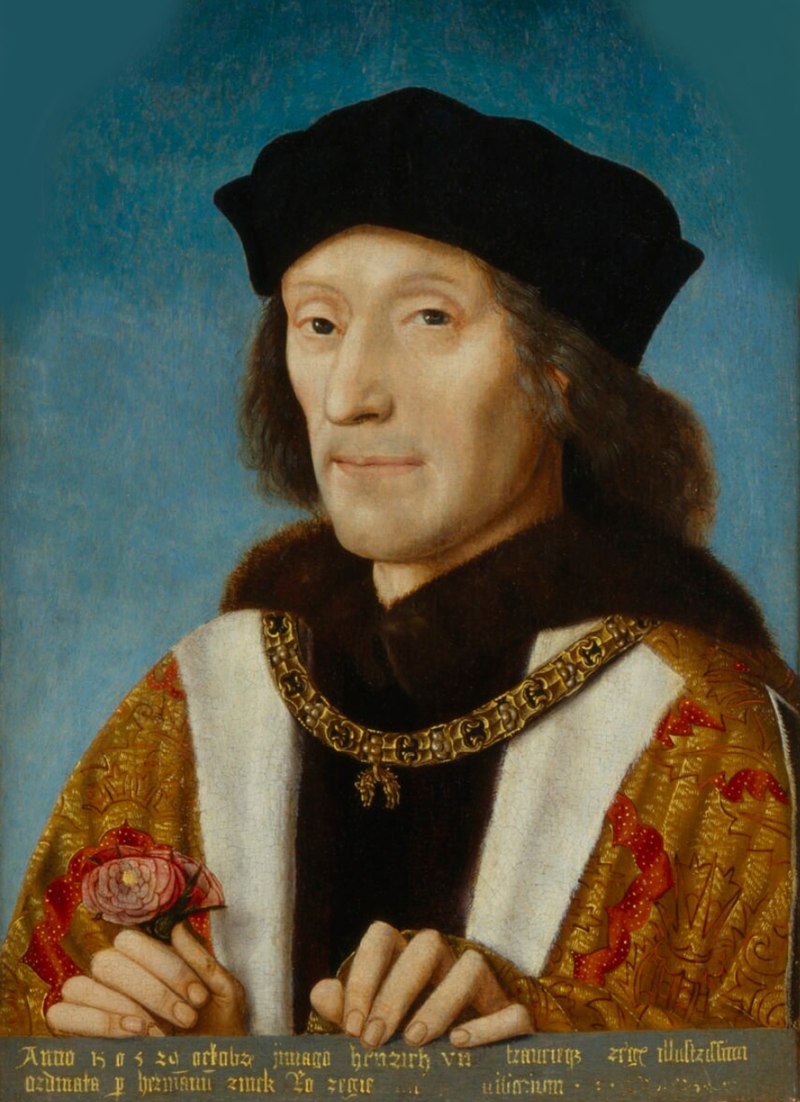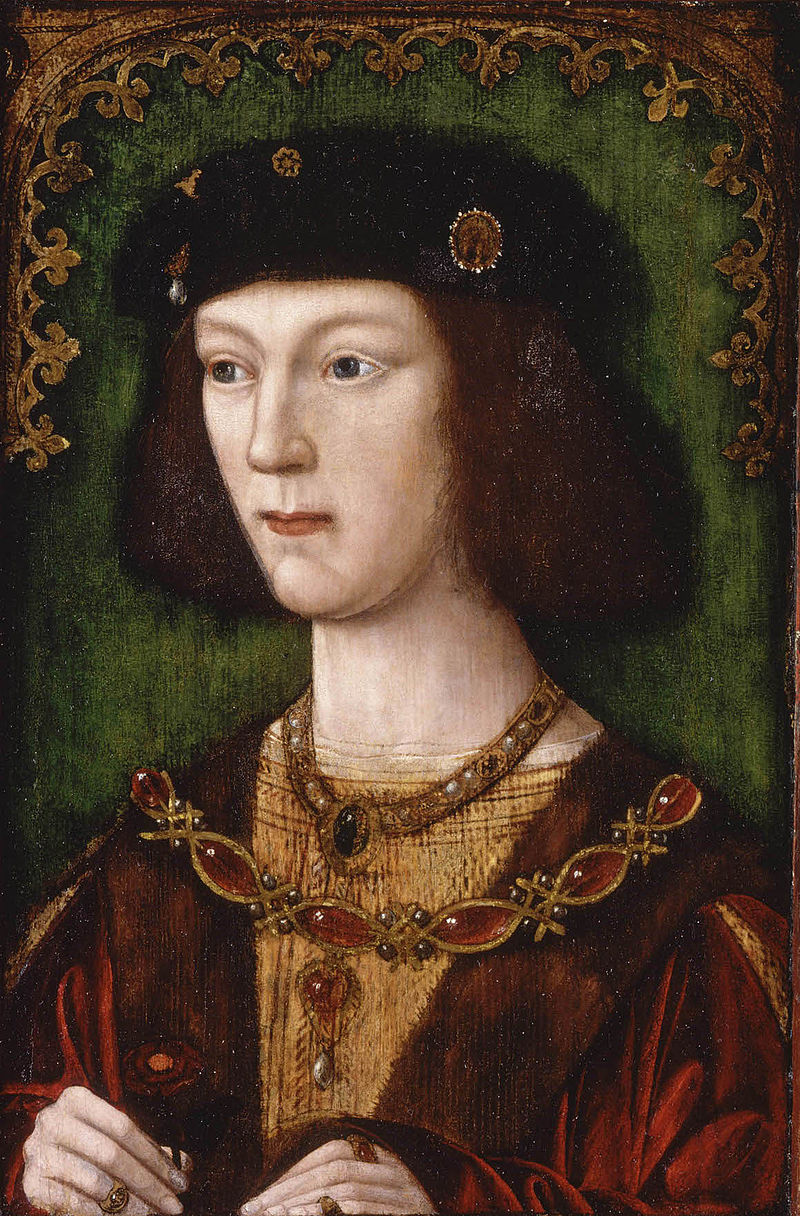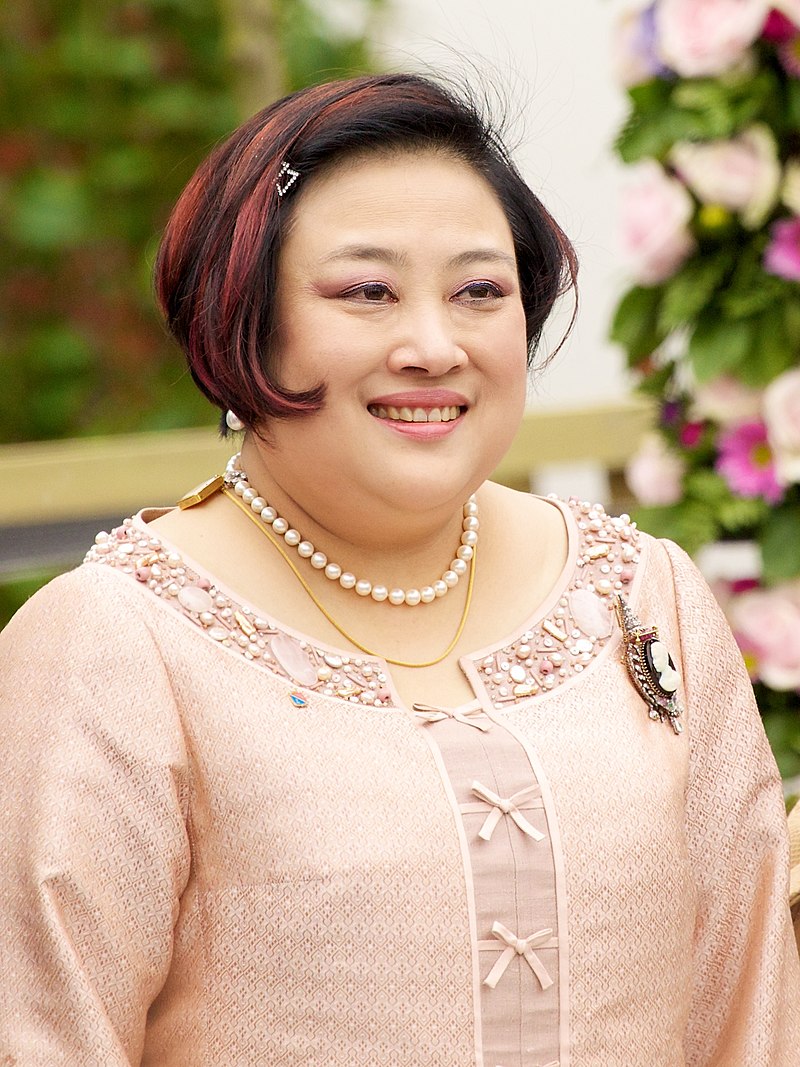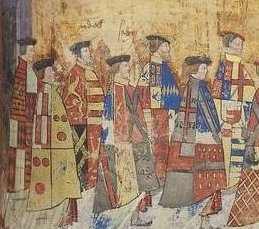by Susan Flantzer
© Unofficial Royalty 2023

King George VI and Queen Elizabeth on their coronation day; Credit – Wikipedia
The coronation of King George VI and Queen Elizabeth (after her husband’s death, known as The Queen Mother) included the last coronation of a Queen Consort, the wife of a reigning king, for 86 years until the coronation of King George VI’s grandson King Charles III and his second wife Queen Camilla, formerly Camilla Shand Parker-Bowles, on May 6, 2023. The coronation of King George VI and Queen Elizabeth was the first coronation to be broadcast on radio and the first coronation to be filmed.
King George VI of the United Kingdom acceded to the British throne on December 11, 1936, upon the abdication of his elder brother King Edward VIII, who had acceded to the throne on January 20, 1936, upon the death of his father King George V. The new king had been given the names Albert Frederick Arthur George at birth and was known as Prince Albert – he had a younger brother Prince George – and was known as Bertie to his family and friends. However, upon becoming king, he took the regnal name George VI, to show continuity with his father King George V, and to restore confidence in the monarchy after his brother’s abdication. The coronation of King Edward VIII had been scheduled to take place at Westminster Abbey on May 12, 1937. Preparations were already underway and souvenirs were on sale when Edward VIII abdicated. Instead, King George VI and his wife Queen Elizabeth (Lady Elizabeth Bowes-Lyon) were crowned on May 12, 1937.
*********************
Guests
The King’s brother Prince Henry, Duke of Gloucester sitting in front of peers wearing their coronets
There were approximately 8,000 guests at Westminster Abbey for the coronation of King George VI and Queen Elizabeth. The 1937 coronation was attended by King George VI’s mother Queen Mary (born Princess Victoria Mary of Teck, a great-granddaughter of King George III) who became the first British Queen Dowager to attend a coronation. Also in attendance were King George VI’s two daughters, eleven-year-old Princess Elizabeth, the future Queen Elizabeth II, and seven-year-old Princess Margaret. The guest list included members of the extended royal family, colonial administrators, ambassadors, Indian princes, premiers of the dominions, and working-class representatives. All peers and members of Parliament were invited.
British Royal Family
King George VI and Queen Elizabeth, sitting on either side of Cosmo Lang, Archbishop of Canterbury. Seated at the back (left to right) The Queen’s parents The Earl and Countess of Strathmore, The Duchess of Kent, The Duchess of Gloucester, Queen Maud of Norway, Queen Mary, Princess Elizabeth, Princess Margaret, and The Princess Royal
- Princess Elizabeth, the King and Queen’s daughter
- Princess Margaret, the King and Queen’s daughter
- Queen Mary, the King’s mother
- Princess Mary, The Princess Royal, Countess of Harewood and Henry Lascelles, 6th Earl of Harewood, the King’s sister and brother-in-law
- George Lascelles, Viscount Lascelles, the King’s nephew
- The Honorable Gerald Lascelles, the King’s nephew
- Prince Henry, The Duke of Gloucester and The Duchess of Gloucester (born Lady Alice Montagu Douglas Scott), the King’s brother and sister-in law
- Prince George, The Duke of Kent and The Duchess of Kent (born Princess Marina of Greece and Denmark), the King’s brother and sister-in-law
- Princess Alexandra of Fife, 2nd Duchess of Fife, Princess Arthur of Connaught and Prince Arthur of Connaught, the King’s first cousin and her husband, the King’s first cousin once removed
- Alastair Windsor, Earl of Macduff, the King’s first cousin once removed
- Lady Maud Carnegie (before her marriage Princess Maud of Fife) and Charles Carnegie, Lord Carnegie, the King’s first cousin and her husband
- Queen Maud of Norway (born Princess Maud of Wales), the King’s paternal aunt
- Crown Prince Olav and Crown Princess Märtha of Norway (born Princess Märtha of Sweden), the King’s first cousin and second cousin, representing his father King Haakon VII of Norway
- Princess Helena Victoria, the King’s first cousin once removed
- Princess Marie Louise, the King’s first cousin once removed
- Lady Patricia Ramsay (born Princess Patricia of Connaught) the King’s first cousin once removed
- Alexander Ramsay of Mar, the King’s second cousin
- Alexander Cambridge, 1st Earl of Athlone (born Prince Alexander of Teck) and Princess Alice, Countess of Athlone (born Princess Alice of Albany), the King’s maternal uncle and his wife, the King’s maternal aunt by marriage and also his first cousin once removed
- Lady May Abel Smith (born Princess May of Teck, after 1917 Lady May Cambridge) and Henry Abel Smith, the King’s first cousin and her husband
- Alexander Mountbatten, 1st Marquess of Carisbrooke (born Prince Alexander of Battenberg) and The Marchioness of Carisbrooke (born Lady Irene Denison), the King’s first cousin once removed and his wife
- Lady Iris Mountbatten, the King’s second cousin
- George Mountbatten, 2nd Marquess of Milford Haven and The Marchioness of Milford Haven (born Countess Nadejda Mikhailovna de Torby), the King’s second cousin and his wife
- Lady Tatiana Mountbatten, the King’s second cousin once removed
- David Mountbatten, Earl of Medina, later 3rd Marquess of Milford Haven, the King’s second cousin once removed
- Lord Louis Mountbatten (born Prince Louis of Battenberg, later 1st Earl Mountbatten of Burma) and Lady Louis Mountbatten (born Edwina Ashley, the King’s second cousin and his wife
- Patricia Mountbatten, the King’s second cousin once removed
- George Cambridge, 2nd Marquess of Cambridge (born Prince George of Teck) and The Marchioness of Cambridge (born Dorothy Hasting), the King’s first cousin and his wife
- Lady Mary Cambridge, the King’s first cousin once removed
- The Duchess of Beaufort (born Princess Mary of Teck) and Henry Somerset, 10th Duke of Beaufort, the King’s first cousin and her husband
- Lady Helena Gibbs (born Princess Helena of Teck), the King’s first cousin
- Lord Frederick Cambridge (born Prince Frederick of Teck), the King’s first cousin
Bowes-Lyon/Cavendish-Bentinck Families – The Queen’s Family
Foreign Royalty
- Sirdar Shah Wali Khan, representing his nephew King Mohammed Zahir Shah of Afghanistan
- Prince Charles of Belgium, Count of Flanders, the King’s third cousin once removed, representing his brother King Leopold III of the Belgians
- Prince Kiril of Bulgaria, Prince of Preslav, the King’s third cousin once removed, representing his brother Tsar Boris III of Bulgaria
- Crown Prince Frederik of Denmark and Crown Princess Ingrid of Denmark (born Princess Ingrid of Sweden), the King’s second cousins, representing his father King Christian X of Denmark
- Prince Mohammed Abdul Moneim, representing King Farouk of Egypt
- Crown Prince Paul of Greece, the King’s double second cousin, representing his brother King George II of Greece
- Yasuhito, Prince Chichibu and Setsuko, Princess Chichibu, representing his brother Emperor Hirohito of Japan
- Prince Felix of Bourbon-Parma, Prince of Luxembourg, husband of the King’s third cousin (representing his wife Grand Duchess Charlotte of Luxembourg)
- Princess Juliana of the Netherlands and Prince Bernhard of the Netherlands (born Prince Bernhard of Lippe Biesterfeld), the King’s fifth cousin and her husband, representing her mother Queen Wilhelmina of the Netherlands
- Mihai, Grand Voevod of Alba Julia (later King Mihai of Romania), the King’s double second cousin once removed, representing his father King Carol II of Romania
- Crown Prince Saud bin Abdulaziz Al Saud of Saudi Arabia, representing his father King Abdulaziz of Saudi Arabia
- Crown Prince Gustav Adolf of Sweden and Crown Princess Louise of Sweden (born Princess Louise of Battenberg, after 1917 Lady Louise Mountbatten), the King’s fourth cousin (also the widower of the King’s first cousin once removed) and the King’s second cousin, representing his father King Gustav V of Sweden
- Prince Chula Chakrabongse, representing King Ananda Mahidol of Thailand
- Hassan Hamid al-Din ibn Yahya, representing his father King Hassan Hamid al-Din ibn Yahya of Yemen
- Princess Paul of Yugoslavia (born Princess Olga of Greece and Denmark) and Prince Regent Paul of Yugoslavia, the King’s second cousin and her husband, representing his first cousin once removed King Peter II of Yugoslavia
Rulers of British Protectorates
Other Notable Foreign Dignitaries
- Ekrem Bey Libohova, representing King Zog I of the Albanians
- Dejazmatch Makonnen Endelkachew, representing Emperor Haile Selassie I of Ethiopia
- Hassan Esfandiary, representing Reza Shah Pahlavi, Shah of Iran
- Sayid Raouf Al Chadirji, representing King Faisal II of Iraq
- Dino Grandi, 1st Conte di Mordano, representing King Vittorio Emanuele III of Italy
- Comte Henri de Maleville, representing Prince Louis II of Monaco
- Sir Kaiser Shumshere Jung Bahadur Rana, representing Tribhuvan Bir Bikram Shah, King of Nepal
- James W. Gerard, representing President Franklin Roosevelt of the United States
- General John J. Pershing, representing President Franklin Roosevelt of the United States
*********************
The Coronation Ceremony

Coronation of King George VI by Frank O. Salisbury, 1938; Credit – Wikipedia
The link below is the very detailed Order of Service for the coronation of King George VI and Queen Elizabeth. It contains exactly what was said and what was done during the coronation.
The doors to Westminster Abbey opened at 8:30 AM for the arrival of the guests. King George VI and Queen Elizabeth arrived at the Abbey at 11:00 AM.

Cosmo Lang, Archbishop of Canterbury with his coronation cope and miter by Philip de László, 1937; Credit – Wikipedia
The main clergy who participated in the coronation:
The Procession
The Procession into Westminster Abbey
The procession was led by members of the clergy, followed by the Lord Mayor of London, Prime Ministers of the United Kingdom and each of the dominions, senior officials of the Royal Household, and twelve members of the Yeoman of the Guard. King George VI and Queen Elizabeth followed and were surrounded by their regalia which were carried by peers.
As the procession preceded down the aisle, the choir sang the anthem I was glad by Hubert Parry, first sung at the coronation of King George VI’s grandfather King Edward VII in 1902.
King George wore his great robes of state, carried by nine pages of honor, all teenage boys:
- Alexander Ramsay of Mar, son of Lady Patricia Ramsay (born Princess Patricia of Connaught), the King’s first cousin once removed
- George Haig, 2nd Earl Haig
- George Edward Charles Hardinge, later 3rd Baron Hardinge of Penshurst
- George Lascelles, Viscount Lascelles, later 7th Earl of Harewood, the King’s nephew
- George Jellicoe, 2nd Earl Jellicoe
- Henry Kitchener, 3rd Earl Kitchener
- George Raymond Seymour, later assistant private secretary and equerry to Queen Elizabeth The Queen Mother
- The Honorable Montague Robert Vere Eliot, son of Montague Eliot, 8th Earl of St. Germans
- Rognvald Herschell, 3rd Baron Herschell
Queen Elizabeth was attended by six maids of honor, all daughters of peers:
- Lady (Victoria) Margaret Cavendish-Bentinck, daughter of William Cavendish-Bentinck, 7th Duke of Portland who was the Queen’s first cousin once removed
- Lady Diana Legge, daughter of William Legge, 7th Earl of Dartmouth
- Lady Elizabeth Hester Mary Paget, daughter of Charles Paget, 6th Marquess of Anglesey
- Lady Elizabeth Ivy Percy, daughter of Alan Percy, 8th Duke of Northumberland
- Lady Iris Mountbatten, daughter of Alexander Mountbatten, 1st Marquess of Carisbrooke who was the King’s first cousin once removed
- Lady Ursula Manners, daughter of John Manners, 9th Duke of Rutland
The Recognition
King George VI and Queen Elizabeth sat in their Chairs of Estate, which were used during the first part of the ceremony, before the sovereign’s anointing and crowning with St. Edward’s Crown. The Archbishop of Canterbury said: “Sirs, I here present unto you King George, your undoubted King: wherefore all you who are come this day to do your homage and service, are you willing to do the same?” The people replied loudly “God save King George”.
The Oath
King George VI then knelt before the altar and swore on the Bible his coronation oath. Afterward, he signed a copy of the oath.
The Communion Service
The Archbishop of Canterbury then began the Communion Service which would continue after the anointing and crowning. The Bishop of London read the Epistle and the Archbishop of York read the Gospel.
The Anointing
King George VI and Queen Elizabeth knelt while the choir sang Veni, Creator Spiritus (Come, Holy Spirit). After some prayers, the choir sang one of the Coronation Anthems by George Frideric Handel, Zadok the Priest. Written for and first performed at the coronation of King George II, it has been sung at every coronation ever since. The words, taken from the Old Testament, are: Zadok the priest and Nathan the prophet anointed Solomon king; and all the people rejoiced and said: God save the king, Long live the king, May the king live forever. Amen. Hallelujah.
The Lord Great Chamberlain, Gilbert Heathcote-Drummond-Willoughby, 2nd Earl of Ancaster, removed King George VI’s Crimson Robe and his Cap of State. The king then sat in the Coronation Chair, also known as St. Edward’s Chair and King Edward’s Chair, and four Knights of the Garter held a canopy over him for privacy: James Stanhope, 7th Earl Stanhope, Victor Bulwer-Lytton, 2nd Earl of Lytton, James Hamilton, 3rd Duke of Abercorn, and Charles Vane-Tempest-Stewart, 7th Marquess of Londonderry.
After William Foxley Norris, Dean of Westminster poured some Holy Oil from the Ampulla into the Spoon, he gave the Spoon to the Archbishop of Canterbury who anointed the king in the form of a Cross on his hands, on his breast, and on the crown of his head.
Crowning the King
The King sitting in the Coronation Chair
The canopy was removed and King George VI was dressed in the Colobium Sindonis, a simple sleeveless white linen shift, and the Supertunica, a long coat of gold silk that reaches to the ankles and has wide-flowing sleeves. The Spurs were brought from the altar by the Dean of Westminster, and given to the Lord Great Chamberlain who presented them to the King. Afterward, the Spurs were returned to the altar. Next, the Archbishop of Canterbury took the Sword from the altar and assisted by the Archbishop of York, the Bishop of London, and the Bishop of Winchester put the Sword in the King’s hands and said a prayer. The King then went to the altar, returned the sword to its scabbard, and sat down in the Coronation Chair.
King George VI receiving the Sceptre from the Archbishop of Canterbury
The Dean of Westminster delivered the Armills to the Archbishop of Canterbury, who said a prayer while putting them on the King’s wrists. The King stood and was clothed with the Robe Royal. After he sat down, the Sovereign’s Orb was brought from the altar by the Dean of Westminster and delivered into the King’s right hand by the Archbishop of Canterbury. The King then gave the orb to the Dean of Westminster who returned it to the altar. The Archbishop of Canterbury put the Sovereign’s Ring on the fourth finger of the King’s right hand and handed him the two scepters – the Sovereign’s Sceptre with the Cross (for royal power) and the Sovereign’s Sceptre with Dove (for mercy and equity).
The crowning of King George VI by the Archbishop of Canterbury
The congregation stood up and the Archbishop of Canterbury took St. Edward’s Crown from the altar, then laid it back on the altar, and said a prayer. The Archbishop then proceeded to the King who was sitting in the Coronation Chair. The Dean of Westminster brought him the crown and the Archbishop of Canterbury reverently put the crown on the King’s head. The people repeatedly shouted, “God Save The King.” The Princes and Princesses, the Peers and Peeresses put on their coronets. Trumpets sounded, and the great guns at the Tower of London were fired.
The Benediction
The Archbishop of Canterbury blessing King George VI
Now that the King had been anointed and crowned, and had received all the signs of the sovereign, the Archbishop of Canterbury blessed him and all those assembled at Westminster Abbey replied with a loud Amen.
The Enthroning
The King went to the throne and was lifted up into it by the Archbishops and Bishops, and other Peers of the Kingdom. Lords bearing the regalia stood on the steps around the throne.
The Homage
King George VI receiving the homage
The Archbishop of Canterbury knelt down before the King while the rest of the Bishops knelt in their places and did their Homage together. As the Archbishop of Canterbury said the following, each Bishop also said it: “I Cosmo, Archbishop of Canterbury [Bishops: I <name> Bishop of <place>] will be faithful and true, and Faith and Truth will bear unto you, our Sovereign Lord, and your Heirs Kings of Great Britain, Ireland, and the British Dominions beyond the Seas, Defenders of the Faith, and Emperors of India. And I will do, and truly acknowledge, the Service of the Lands which I claim to hold of you, as in right of the Church. So help me God.” Then the Archbishop of Canterbury kissed the King’s left Cheek.
Then the King’s brother Prince Henry, Duke of Gloucester, took off his coronet and knelt down before the King. The rest of the Princes of the Blood Royal, being Peers of the Realm, knelt in their places, took off their coronets, and pronounced the words of Homage the Duke of Gloucester, “I <name>Prince, or Duke of <place> do become your Liege man of Life and Limb,
and of earthly worship; and Faith and Truth I will bear unto you, to live and die, against all manner of Folks. So help me God.”
The most senior peer of each of the five ranks of peerage – Duke, Marquess, Earl, Viscount, and Baron – individually knelt before the King. The other peers who were in seats, in turn, knelt down, took off their coronets, and did their homage: the Dukes first by themselves, then the Marquesses, the Earls, the Viscounts, and the Barons. Each rank of peerage, said together, “I, <name> Duke, or Marquess, Earl, Viscount, Baron of <place> do become your liege man of Life and Limb, and of earthly worship; and Faith and Truth I will bear unto you, to live and die, against all manner of Folks. So help me God.
The Queen’s Coronation
Crowning of Queen Elizabeth by the Archbishop of Canterbury
Queen Elizabeth went to the steps of the altar, and supported by two bishops, knelt down on the faldstool (kneeler) placed before the high altar. The Archbishop of Canterbury said a prayer asking God’s blessing upon the Queen. Four peeresses, the Duchess of Norfolk, the Duchess of Rutland, the Duchess of Buccleuch, and the Duchess of Roxburghe held a canopy over her for privacy. The Archbishop of Canterbury anointed the crown of the Queen’s head and placed the Queen Consort’s Ring on her fourth finger on her right hand. The Archbishop of Canterbury then took the Queen’s Crown from the high altar and reverently set it upon the Queen’s head, at which time, the Princesses and Peeresses put their coronets on their heads. The Queen was then handed her Sceptre with the Cross and the Ivory Rod with the Dove, before walking over to her own throne beside the King, where she sat.
The Communion
The King and Queen gave their regalia to The Lord Great Chamberlain and then they privately received Holy Communion from the Archbishop of Canterbury in a communion service that included a general confession and absolution, and, along with the people, recited the Lord’s Prayer. The King and Queen received their crowns again and returned to their throne where they were given their scepters. A Te Deum was sung by the choir.
The Recess
The newly crowned King George VI about to leave Westminister Abbey after the Coronation
The King and Queen proceeded to St. Edward’s Chapel, directly behind the high altar, where the Shrine of St. Edward the Confessor stands. The King gave St. Edward’s Crown, the Sceptre, and the Rod to the Archbishop of Canterbury who laid them on the altar in the chapel. The King’s Robe Royal was exchanged for a robe of purple velvet and he now wore the Imperial State Crown. The Archbishop of Canterbury put the Sceptre with the Cross into the King’s right hand and the Orb in his left hand. The King and Queen, still carrying her Sceptre with the Cross in her right hand and the Ivory Rod with the Dove in her left hand, left the St. Edward’s Chapel to the singing of the National Anthem and then proceeded up the aisle to the West Door of the Westminster Abbey.
This article is the intellectual property of Unofficial Royalty and is NOT TO BE COPIED, EDITED, OR POSTED IN ANY FORM ON ANOTHER WEBSITE under any circumstances. It is permissible to use a link that directs to Unofficial Royalty.
Works Cited
- A Guide to Coronations (no date) Westminster Abbey. Available at: https://www.westminster-abbey.org/about-the-abbey/history/coronations-at-the-abbey/a-guide-to-coronations (Accessed: March 23, 2023).
- A History of Coronations (no date) Westminster Abbey. Available at: https://www.westminster-abbey.org/about-the-abbey/history/coronations-at-the-abbey/a-history-of-coronations (Accessed: March 23, 2023).
- Coronation Chair (no date) Westminster Abbey. Available at: https://www.westminster-abbey.org/about-the-abbey/history/coronations-at-the-abbey/spotlight-on-coronations/coronation-chair (Accessed: March 23, 2023).
- Coronation of George VI and Elizabeth (2023) Wikipedia. Wikimedia Foundation. Available at: https://en.wikipedia.org/wiki/Coronation_of_George_VI_and_Elizabeth (Accessed: March 23, 2023).
- Coronation Theatre (no date) Westminster Abbey. Available at: https://www.westminster-abbey.org/about-the-abbey/history/coronations-at-the-abbey/spotlight-on-coronations/coronation-theatre (Accessed: March 23, 2023).
- England and Scotland Monarch Coronations and Other Related British Royal Information (2022) Coronation of British Kings & Queens. Available at: http://kingscoronation.com/ (Accessed: March 23, 2023).
- Flantzer, Susan. (2019) Coronations after the Norman Conquest (1066 – present), Unofficial Royalty. Available at: https://www.unofficialroyalty.com/coronations-after-the-norman-conquest-1066-present/ (Accessed: March 23, 2023).
- Keay, Anna. (2012) The Crown Jewels. London: Thames and Hudson, Historic Royal Palace.
- Order of Service (no date) Westminster Abbey. Available at: https://www.westminster-abbey.org/about-the-abbey/history/coronations-at-the-abbey/spotlight-on-coronations/order-of-service (Accessed: March 23, 2023).
- Strong, Roy. (2005, 2022) Coronation – A History of the British Monarchy. London: William Collins.
- The Coronation of King George VI and Queen Elizabeth in 1937 (no date) Oremus. Available at: https://www.oremus.org/coronation/1937/ (Accessed: March 23, 2023).










